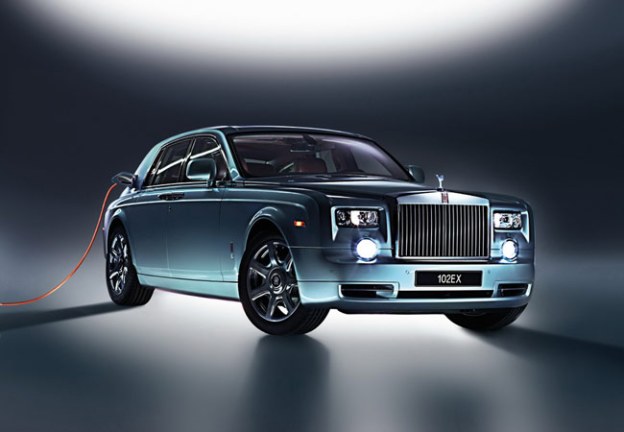 As the United States and European Union try to create a sustainable future for personal transportation, emissions and fuel economy regulations are getting stricter. Through its Corporate Average Fuel Economy (CAFE) legislation, the U.S. hopes to see new cars achieve a fleet average of 56.2 mpg by 2025.
As the United States and European Union try to create a sustainable future for personal transportation, emissions and fuel economy regulations are getting stricter. Through its Corporate Average Fuel Economy (CAFE) legislation, the U.S. hopes to see new cars achieve a fleet average of 56.2 mpg by 2025.
Larger companies can meet that goal by churning out lots of small cars, electric vehicles (EVs), and hybrids. Smaller companies, ones that sell a specific type of car, have to meet the new standards while maintaining their identities. That is why Rolls-Royce, the most established car company in the world, is thinking about building plug-in hybrids.
Rolls builds one thing: big, luxurious land yachts, all powered by 6.75-liter (“six-and-three-quarter”) V12 engines. The company makes two models: the large Phantom (in sedan, coupe, and convertible body styles), and the small(er) Ghost. From Grey Poupon commercials to Goldfinger, Rolls-Royce is synonymous with traditional luxury. Consequently, its customers have high expectations.
“Customers tell us, ‘Do not mess with the 12-cylinder engine,’” Rolls CEO Torsten Mueller-Oetvoes said last week at the New York Auto Show. “It is their Holy Grail, and they love it.” That engine, and the performance it makes possible, are just as important to Rolls customers as the rest of the car.
At the 2011 Geneva Motor Show, Rolls unveiled a prototype Phantom powered by an electric motor, the 102EX (shown). However, it only had a range of 125 mph, and a top speed of 99, which customers found unsatisfactory. The extremely quiet electric powertrain also revealed some squeaks and rattles in the chassis, an embarrassment to a company known for its quiet cabins (that’s why its cars are named after phantasms).
Instead, Rolls is considering a plug-in hybrid powertrain. This would consist of a gasoline (probably the traditional V12), an electric motor, and a battery pack. Unlike conventional hybrids, the battery pack could be charged from a wall outlet, or by the gasoline engine.
Mueller-Oetvoes said that, while the company does not have any immediate plans to build the car, but the idea is being investigated. Rolls-Royce development work tends to move at a glacial pace, with models sometimes going decades without a redesign. Even if Rolls greenlights the hybrid project soon, a production version won’t be around for awhile.
A plug-in hybrid is probably Rolls-Royce’s best bet at meeting fuel economy standards while maintaining its unique identity. A plug-in hybrid could be based on an existing car, and even use customers’ beloved V12. It’s a much better idea than cynically slapping the company badge on a tiny, fuel-efficient car, like Aston Martin did with the Cygnet. That car is a Scion iQ in disguise and a complete embarrassment.
Traditionally, Rolls-Royce puts red badges on its prototype cars, and black ones on production cars. If a hybrid Rolls ever gets built, perhaps it will get a green badge.
Editors' Recommendations
- Lamborghini’s Urus SE plug-in hybrid tries to do it all
- Why you should consider a plug-in hybrid in 2023
- How Johnny Cash’s Rolls Royce transformed into a Tesla-powered EV
- Mercedes downsizes its plug-in hybrid tech with the new A250e sedan, hatchback
- Bentley will offer a hybrid powertrain on every model by 2023


